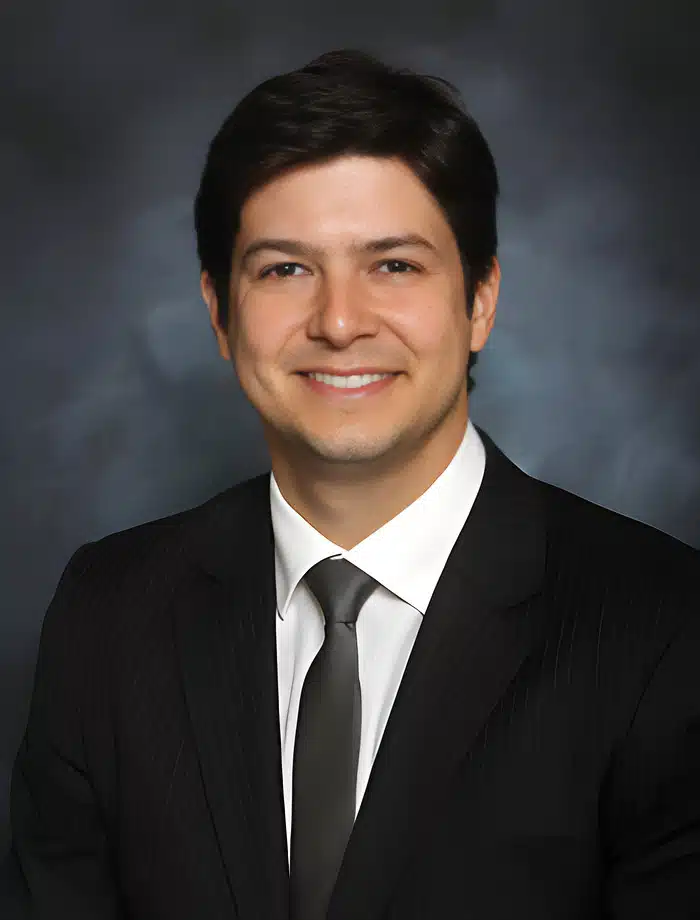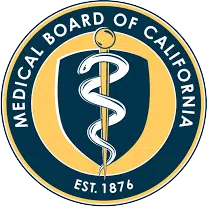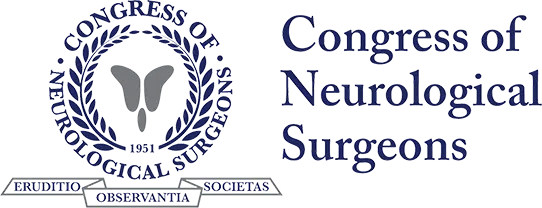Benefits of Minimally Invasive Spine Surgery for You
There are many benefits of choosing minimally invasive spinal surgery over traditional surgery in Mission Viejo and Orange County. Some advantages include:
"*" indicates required fields
In the past, fixing damage caused by degenerative disc disease, disc herniation and degeneration, tumors, spinal deformities, and fractures required invasive spine surgery involving the removal of problematic parts using traditional tools. This would often mean addressing a number of issues like nerve compression and the amount of pressure placed on the spinal column. However, modern technology and advances in surgical techniques now allow surgeons to correct these problems with minimally invasive spine surgery (MISS), offering patients faster recovery times and better outcomes during surgery, even for different types of spinal issues. Studies have shown that the benefit of this treatment option increases when used in combination with other therapies.
Dr. Alexander Taghva, MD, FAANS, is a highly regarded board-certified neurosurgeon with a strong focus on patient care. He performs minimally invasive spinal surgery, including discectomy, for patients from Orange County and Southern California on an outpatient basis at his state-of-the-art medical facility in Mission Viejo.
What Is MISS?
Minimally invasive spine surgery is a type of surgical procedure that Dr. Taghva performs to correct several spinal disorders. This may include degenerative disc disease as well as bone spurs. MISS procedures minimize surgical trauma and scarring, therefore often requiring just one small incision to repair a damaged disc or relieve pressure on the spinal nerves.
Patients in Mission Viejo and Orange County often choose MISS over traditional spinal surgery because it is a much quicker procedure with less downtime, and Dr. Taghva performs it on an outpatient basis. Minimally invasive spinal surgery in Mission Viejo also opens up the benefits of back surgery to patients who are unable to undergo a more invasive procedure for safety reasons.
Call today to schedule your consultation
Your Spine Surgery Consultation at Our Orange County Office
All patients will need to consult with Dr. Taghva before scheduling MISS. This consultation for minimally invasive spine surgery in Mission Viejo, Orange County, and Laguna Beach is important for determining candidacy and creating a surgical plan. During this appointment, we will discuss your medical history, any limitations, and current medications and treatments.
Dr. Taghva will take X-rays, go over information from your medical history, ask questions, and then discuss your treatment options, which may include spinal surgery. The surgeon will go over what to expect during surgery and give pre-and post-operative instructions. He will also discuss the type of anesthesia, review the desired outcome, and give you an idea of what to expect in the months following the procedure. For this reason, you should come prepared with a list of questions to ask the spine surgeon.

Injury is a serious matter, and if you have sustained one, you should seek medical attention from a qualified professional to determine the best course of action for your particular injury, which may include spinal surgery to correct the damage and help you regain full function. Dr. Taghva provides the most advanced treatment options with the best possible outcomes.
What Does Minimally Invasive Spine Surgery Treat?
Minimally invasive techniques often successfully treat spinal surgery patients who are suffering from different conditions. For instance, these may include spinal stenosis, disc degeneration, bone spurs, scoliosis, herniated discs in the lumbar spine and cervical regions, and spine deformities.
Dr. Taghva will provide a customized treatment plan to address your specific health concerns. He prefers to use minimally invasive surgical techniques in combination with other treatment options whenever possible. However, not everyone is a good candidate for minimally invasive spine surgery in Orange County. There are cases where certain problems, such as kyphosis or damaged joints, may require a different approach.
For the most part, patients with back pain related to a spinal defect or conditions such as osteoporosis, which can cause compression fractures, may require open surgery. During an open procedure, the surgeon makes a large incision and moves the muscle back to directly access the spine with the help of retractors. This opening in the soft tissues is necessary for performing procedures like the insertion of plates, screws, or implants under the guidance of fluoroscopy, which uses X-ray images to visualize the spine during surgery. For instance, individuals with narrowing of the open spaces in the spinal canal may not be able to be treated with minimally invasive techniques and may require more extensive surgery, which can result in an increased risk of infections as well as potential muscle damage. However, the surgeon will use different approaches depending on the patient’s condition, and the ultimate goal is to provide relief with the least invasive operation possible, ensuring optimal alignment and results.
Testimonials
Preparing for Minimally Invasive Spine Surgery
In preparation for MISS, Dr. Taghva recommends that his patients quit smoking and exercise before surgery to encourage a faster recovery. You should pause any non-essential medications or herbal supplements that could react with the anesthetic a few weeks ahead of time. In addition, the doctor may prescribe antibiotics to prevent infections. You will discuss this during the consultation with Dr. Taghva.
What Are the Different Minimally Invasive Spine Surgery Methods?
Dr. Taghva uses many methods to perform MISS in Mission Viejo and Orange County, including various approaches based on the patient’s needs and condition, with some requiring advanced instrumentation and navigation techniques:
Tubular Retractor Method
This technique involves dilating the soft tissues vs. cutting through the muscle. It uses tubes to pull back the muscle and allows the surgeon to access the spine through a small incision rather than making a larger incision and exposing the open area, as is required with traditional spine surgery. This operation is less invasive and promotes faster healing despite the difficulty of the surgery.
Dr. Taghva uses an endoscope, which is a tiny camera attached to a flexible tube, to assist in procedures with minimal access. Then, after he makes the modifications, he will remove the tubular retractor, and the dilated tissues return to normal, resulting in faster recovery and better overall results.
Percutaneous Method
Sometimes, the surgeon must place instruments like screws, rods, and implants to stabilize the spinal cord, or joints to keep the spine immobilized during spinal fusion. Percutaneous placement of these instruments is done through small skin incisions without the need to cut through the underlying muscle tissue. X-ray images using fluoroscopy guide the placement process, which ensures accurate and safe insertion.
Direct Lateral Access
When the lumbar spine is involved, the spinal column is often accessed through the side of the body. With this method, the patient will be lying on their side in a lateral position as the surgeon places a tubular retractor to access discs and bones in the spine under direct light, ensuring proper visibility during the procedure.
Thoracoscopic Access
Sometimes, accessing the front of the thoracic spine is necessary. Traditional surgery opens the chest through a large incision and sometimes requires one or more ribs to be removed. With the thoracoscopic approach, the surgeon makes multiple small incisions so that the endoscope can be inserted to facilitate the procedure, minimizing muscle damage and allowing for a smaller surgical opening.
Are you ready to meet a leading Orange County Neurosurgeon?
What Are the Treatment Options for Minimally Invasive Spine Surgery (MISS)?
Minimally invasive spine surgery can treat a range of spine conditions using the following surgical techniques:
Discectomy: When spinal discs become weak, the tissue inside can herniate outside of the disc. For this reason, this herniated material can put pressure on the nerves, which can be very painful. When this occurs, the physician will often indicate surgical treatment to trim the herniated disc and relieve pressure on the spinal nerves. Using tubular dilators and an endoscope, the surgeon can perform the discectomy using MISS.
Spinal decompression: Spinal stenosis is the medical term describing the narrowing of the vertebral canal, consequently, causing pressure on the nerves. For this reason, pain and numbness are common symptoms of spinal stenosis. During spinal surgery, the surgeon may need to remove the bone and soft tissues with tubular dilators and endoscopes. Laminectomy and foraminotomy are common procedures we use to correct spinal stenosis in the field of spinal surgery.
Transforaminal lumbar interbody fusion: We often use transforaminal lumbar interbody fusion, or TLIF, when the patient has low back pain due to degenerative disc disease and disc herniation. The surgeon performs it through the posterior side with the patient lying on their stomach. Dr. Taghva will typically position the patient accordingly and make two small incisions in the affected area of their condition, focusing on the nerve root location. He will then insert pedicle screws and rods between the vertebrae to address any weakness, ensuring appropriate space and motion for the spine. In conjunction with the hardware, the surgeon removes the intervertebral disc at the correct level and places a bone graft to stabilize the vertebral levels. During the dissection process, the surgeon will be careful to avoid damage to vital organs nearby, such as the lungs. Magnetic resonance imaging (MRI) is performed beforehand to understand the extent of the changes and identify the tumor site, if applicable.
What to Expect After Minimally Invasive Spine Surgery
Minimally invasive spine surgery costs less and takes significantly less time to perform and recover from than traditional spinal surgery. Dr. Taghva, along with other skilled spine surgeons, will discuss the indications for therapy, such as physical therapy, and how long your recovery will likely be during your consultation. Dr. Taghva performs these spine surgeries on an outpatient basis in Mission Viejo. For this reason, no hospital stay is necessary. In general, recovery time from MISS is about half that of traditional open spine surgery. For the most part, patients can often go back to work within 2 weeks and sometimes less.
Since endoscopic spine surgery does not disrupt the surrounding tissues and muscles of the spine, patients can expect mild discomfort compared to open surgery. Dr. Taghva may prescribe medication to manage any pain and alleviate inflammation. For the most part, endoscopic spine surgery requires only a very small incision. Because of this, scarring is minimal, often only millimeters long.
While these are common expectations following MISS, each specific situation may vary.
What Are the Possible Side Effects of Minimally Invasive Spine Surgeries?
Like every surgery, minimally invasive spine surgery has its risks. Choosing a board-certified neurosurgeon, such as Dr. Taghva or other experienced spine surgeons, keeps these possible side effects to a minimum. Some possible complications may include, for example:
- Blood loss
- Infection
- Damage to the spinal nerves
- Blood clotting
- Anesthesia complications
- Spinal fluid leaking

Why Choose Dr. Alexander Taghva
Dr. Alexander Taghva is a leading board-certified neurosurgeon, specializing in brain surgery, endoscopic spine surgery, as well as spine disorders. Also, he is the only spine surgeon in Orange County and southern California who offers endoscopic laminotomy surgery. Dr. Taghva:
- Graduated from John Hopkins University School of Medicine and completed his residency at the University of California
- Completed a prestigious fellowship at The Ohio State University in Neuromodulation and Functional Neurosurgery
- Specializes in minimally invasive and endoscopic surgery, spinal stenosis, artificial disc replacement, spinal disorders, spinal surgery revision, and other spinal conditions.
- Specializes in brain surgery to treat trigeminal neuralgia, brain tumors, pituitary tumors, and Parkinson’s disease.
- A highly-respected neurosurgeon with many years of experience, including treating chronic pain via stimulation of the spinal cord and brain
- Actively involved in medical research and the lead investigator for clinical trials on spinal cord stimulation





